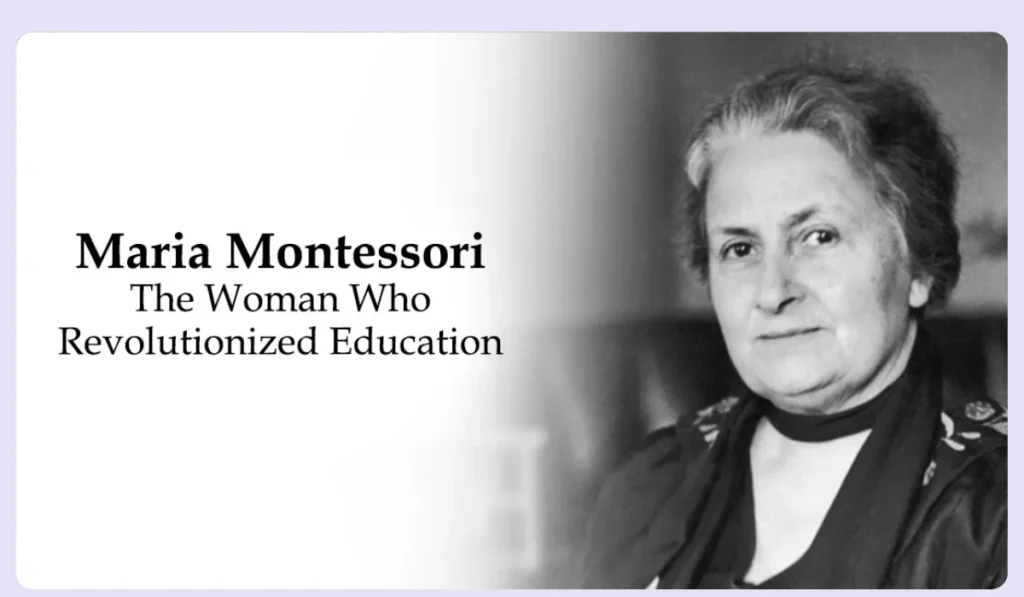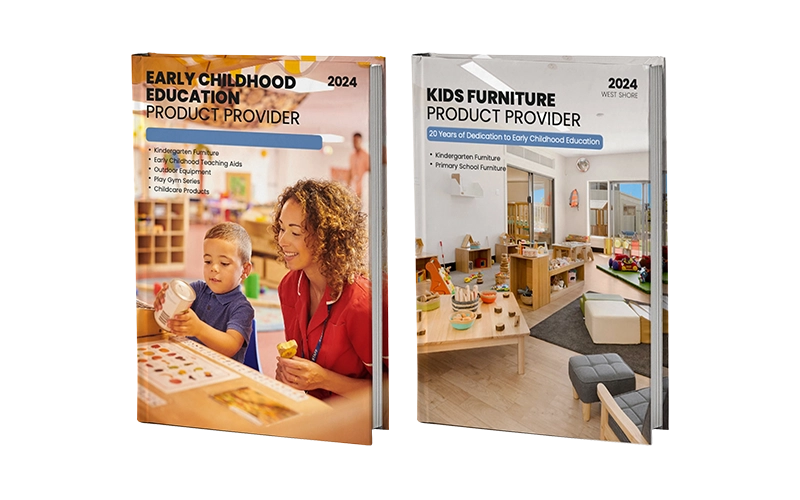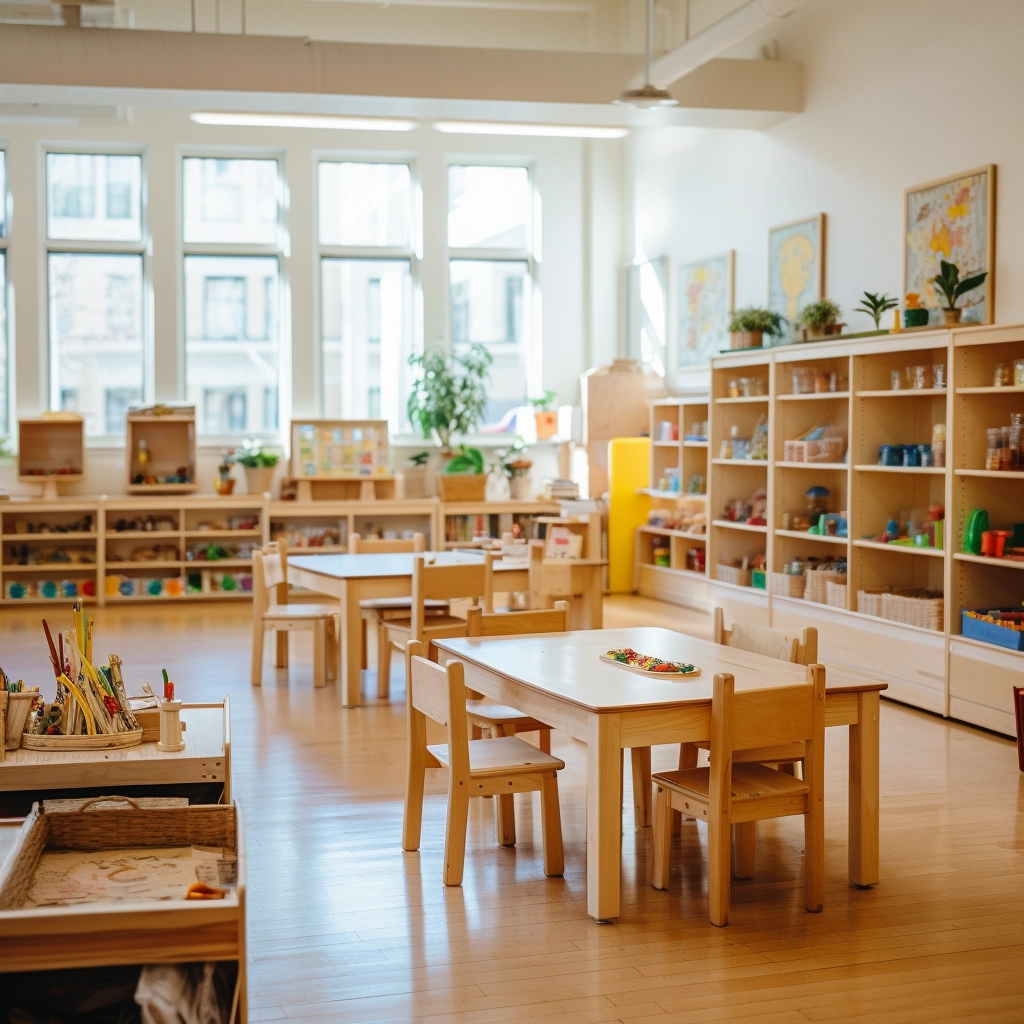Choosing the right preschool for your child is a big decision. It’s where they’ll embark on their educational journey, developing essential skills and a love of learning that will last a lifetime. But with a myriad of options available, the process can feel overwhelming. Are you considering Montessori vs Reggio Emilia? These two philosophies often stand out for their unique, child-centered approach. Both are renowned for fostering a love of learning, but they have distinct differences that cater to various learning styles and needs.
This article will serve as your guide through the world of Montessori and Reggio Emilia. We’ll delve into their core principles, explore their unique characteristics, and highlight the key differences to help you determine the best fit for your child. Whether you’re drawn to structured, independent learning or a more collaborative, project-based approach, understanding these philosophies will empower you to make an informed decision for your child’s early education.
Understanding the Montessori Method: Independent, Structured, Hands-On
Developed by Dr. Maria Montessori in the early 20th century, the Montessori method was born from her observations of children’s natural curiosity and desire to learn. Dr. Montessori, one of the first female physicians in Italy, began her work with children in marginalized communities. She noticed that children, when given the freedom to explore and learn at their own pace in a supportive environment, thrived intellectually and socially. This led her to develop a revolutionary approach to education that emphasizes self-directed learning, hands-on exploration, and a carefully prepared environment.

Key characteristics of a Montessori classroom:
- Prepared Environment: Imagine a classroom where everything has its place. Montessori classrooms are thoughtfully designed with age-appropriate materials and activities arranged on low, accessible shelves. This organization encourages children to make independent choices, take responsibility for their learning materials, and pursue their own learning paths.
- Self-Directed Learning: Children are empowered to select activities that capture their attention, fostering a sense of ownership and intrinsic motivation. A child might choose to work with puzzles, engage in sensorial activities with different textures, or practice practical life skills like pouring and buttoning. This freedom within structure allows them to learn at their own pace and follow their natural curiosity.
- Hands-on Materials: Montessori classrooms are filled with specialized materials designed to engage the senses and promote learning through concrete experiences. These materials are often self-correcting, allowing children to learn from their mistakes independently. Examples include:
- Practical Life Materials: Pouring, spooning, buttoning frames, dressing frames – activities that mimic everyday tasks.
- Sensorial Materials: Pink tower, brown stairs, knobbed cylinders – materials that isolate different sensory qualities like size, weight, and shape.
- Language Materials: Sandpaper letters, movable alphabet, picture cards – tools for phonetic learning and reading.
- Math Materials: Golden beads, number rods, spindle boxes – materials that represent mathematical concepts in a concrete way.
- Mixed-Age Classrooms: Children of different ages (typically spanning 3 years) learn together, fostering peer-to-peer learning and a sense of community. Older children often mentor younger ones, reinforcing their own knowledge and developing leadership skills, while younger children are inspired by the capabilities of their older peers.
Benefits of a Montessori education:
- Independence: Children develop self-reliance and a sense of responsibility for their learning.
- Self-Discipline: The structured environment and focus on individual work foster self-discipline and concentration.
- Problem-Solving Skills: Children are encouraged to find solutions independently, promoting critical thinking and problem-solving abilities.
- Love of Learning: By following their interests and learning at their own pace, children develop a natural love of learning that extends beyond the classroom.

Exploring the Reggio Emilia Approach: Collaborative, Creative, Emergent
Originating in the Italian city of Reggio Emilia after World War II, this approach was inspired by the work of Loris Malaguzzi, an educator who believed in the extraordinary potential of children. Malaguzzi envisioned a new kind of education that valued children’s creativity, collaboration, and innate curiosity. Reggio Emilia emphasizes communication, creative expression, and a project-based curriculum that emerges from the children’s interests.
Key elements of the Reggio Emilia approach:
- “Hundred Languages of Children”: This philosophy recognizes that children express themselves in many ways – through words, movement, drawing, painting, building, sculpting, dramatic play, and more. The environment is rich with opportunities for creative exploration, allowing children to communicate their thoughts and ideas through a variety of mediums.
- Project-Based Learning: Curriculum in Reggio Emilia is not pre-set. Instead, it emerges from the children’s interests. Teachers carefully observe and document children’s ideas, questions, and explorations. Then, they develop in-depth projects that encourage research, investigation, problem-solving, and creative expression. A project about “trees,” for example, might involve nature walks, drawing, creating sculptures with natural materials, storytelling, and even investigating the scientific properties of wood.
- Collaboration: Children work together on projects, sharing ideas, negotiating roles, and learning from one another. This fosters communication skills, teamwork, and social-emotional development. They learn to respect diverse perspectives, resolve conflicts, and contribute to a shared goal.
- The Environment as the “Third Teacher”: Reggio Emilia classrooms are intentionally designed to be aesthetically pleasing, filled with natural light, and organized to inspire creativity and wonder. The environment is seen as an integral part of the learning process, providing children with a rich and stimulating space to explore and discover.
Benefits of a Reggio Emilia education:
- Creativity: Children are encouraged to think outside the box, experiment with different materials, and express themselves in unique ways.
- Critical Thinking: Project work involves research, investigation, and problem-solving, fostering critical thinking skills.
- Collaboration: Children learn to work effectively with others, communicate their ideas, and respect diverse perspectives.
- Strong Sense of Community: The collaborative nature of Reggio Emilia fosters a strong sense of community and belonging within the classroom.
![A Reggio Emilia classroom with children engaged in a collaborative art project. ALT text: Montessori vs Reggio Emilia – Children collaborating on an art project in a Reggio Emilia inspired classroom.]
Montessori vs Reggio Emilia: Key Differences
While both Montessori and Reggio Emilia are child-centered and constructivist in nature (meaning children actively construct their own knowledge through experiences), there are some key differences to consider:
| Feature | Montessori | Reggio Emilia |
|---|---|---|
| Curriculum | Structured, individualized, with a sequence of materials and activities | Emergent, project-based, driven by children’s interests |
| Teacher’s Role | Guide, observer, prepares the environment | Collaborator, co-learner, facilitates projects |
| Learning Environment | Prepared environment with defined areas and specialized materials | Flexible and aesthetically rich spaces with open-ended materials |
| Learning Materials | Specifically designed Montessori materials with a focus on sensory exploration and skill development | Variety of natural and found materials, art supplies, and resources for project work |
| Assessment | Observation-based, portfolios, some standardized tests may be used | Observation-based, documentation of learning through projects and children’s work, often displayed in the classroom |
Cost Considerations for Montessori vs Reggio Emilia
When comparing Montessori and Reggio Emilia preschools, cost is often a factor. It’s important to understand that tuition can vary significantly depending on several factors:
- Location: Schools in urban areas or those with high demand may have higher tuition rates.
- Program Length: Full-day programs will generally cost more than half-day programs.
- School Resources: Schools with specialized facilities, extensive materials, and low student-teacher ratios may have higher costs.
- Teacher Training: Authentic Montessori and Reggio Emilia programs require specialized teacher training, which can influence tuition rates.
It’s best to contact the schools directly to inquire about their specific tuition rates and any financial aid options they may offer.
Choosing Between Montessori and Reggio Emilia: Finding the Right Fit
Ultimately, the best preschool philosophy depends on your child’s individual needs and learning style. Here are some essential factors to consider when choosing between Montessori and Reggio Emilia:
- Your Child’s Personality: Is your child independent and self-motivated, or do they thrive in collaborative settings? Do they enjoy working on their own or prefer group activities?
- Learning Style: Does your child learn best through hands-on activities, or do they prefer creative expression and project-based learning? Are they visual learners, auditory learners, or kinesthetic learners?
- Interests: Observe what sparks your child’s curiosity. Are they drawn to building, art, music, nature, or practical life skills?
- School Visits: Visiting potential preschools is crucial. Observe the classroom environment, interact with the teachers, and get a sense of the school’s overall philosophy. Does the environment feel welcoming and stimulating?
- Teacher Qualifications: Inquire about the teachers’ training and experience in the specific approach (Montessori or Reggio Emilia). Authentic programs often require specific certifications from recognized organizations like the American Montessori Society (AMS) or the Association Montessori Internationale (AMI). For Reggio Emilia, look for teachers with professional development in the Reggio Emilia approach, often offered through regional Reggio Emilia affiliates.
- Class Size and Student-Teacher Ratio: Consider the size of the class and the number of teachers to ensure adequate individual attention for your child. Smaller class sizes often allow for more individualized support.
- Overall Feel: Trust your gut feeling. Does the school feel welcoming and nurturing? Do the teachers seem passionate and engaged?
Remember, there is no one-size-fits-all answer. Trust your instincts and choose the environment where you feel your child will thrive. Many schools also blend elements of both philosophies, so be open to exploring those options as well.
Bringing the Philosophies Home: Montessori vs Reggio Emilia Inspiration
Even if you choose a traditional preschool, you can still incorporate elements of Montessori and Reggio Emilia into your home environment to enrich your child’s learning experiences.
Montessori at Home:
- Create a Prepared Environment: Designate a specific area for your child to work and play, with accessible shelves for toys and materials. This could be a corner of their bedroom, a playroom, or even a designated space in the living room. Organize materials in a way that allows your child to choose and access them independently.
- Provide Child-Sized Tools: Invest in child-sized furniture, utensils, and tools to encourage independence in daily tasks. This might include a small table and chairs, child-safe kitchen utensils, gardening tools, or cleaning supplies.
- Encourage Practical Life Skills: Involve your child in activities like cooking, cleaning, setting the table, and gardening to develop practical skills and a sense of responsibility. Allow them to help with laundry, prepare simple snacks, or care for plants.
- Embrace Sensory Exploration: Offer a variety of sensory experiences, such as playing with playdough, finger painting, exploring different textures, or engaging in water play.
Reggio Emilia at Home:
- Make Space for Creativity: Set up an art area with a variety of materials like paints, crayons, markers, clay, paper, scissors, glue, and natural objects. Encourage open-ended exploration and experimentation.
- Display Children’s Artwork: Showcase your child’s creations to encourage their artistic expression and build confidence. Create a designated space for displaying their artwork, such as a bulletin board, a gallery wall, or even the refrigerator.
- Engage in Collaborative Projects: Work together on projects that spark your child’s interest, such as building a fort, creating a garden, putting on a puppet show, or writing a story.
- Document and Reflect: Take photos and videos of your child’s creative process and projects. Encourage them to reflect on their experiences and share their thoughts and ideas.
By creating a stimulating and supportive learning environment at home, you can complement your child’s preschool experience and foster their love of learning.
Nurturing a Lifelong Love of Learning
Whether you choose Montessori, Reggio Emilia, or another approach, the most crucial goal is to nurture your child’s natural curiosity and instill a lifelong love of learning. Both philosophies offer valuable insights into how children learn best: through exploration, creativity, and meaningful experiences.
Here are some additional tips to support your child’s learning journey:
- Follow their lead: Pay attention to your child’s interests and provide opportunities for them to explore them.
- Ask open-ended questions: Encourage your child to think critically and express their ideas.
- Provide a rich and stimulating environment: Surround your child with books, art materials, and opportunities for exploration and discovery.
- Be patient and supportive: Learning takes time and effort. Celebrate your child’s successes and encourage them to persevere through challenges.
- Make learning fun: Incorporate games, songs, and playful activities into your child’s learning experiences.
WestShore Furniture Influences and Trends in Early Childhood Education
On the WestShore Furniture, there’s a growing trend towards incorporating natural elements, sustainable practices, and a focus on outdoor learning into early childhood education. This aligns beautifully with Montessori and Reggio Emilia philosophies, emphasizing the importance of the environment and natural materials in children’s learning.
When designing your child’s learning space at home, consider incorporating WestShore design elements:
- Natural Materials: Choose furniture and toys made from wood, bamboo, and organic cotton.
- Minimalist Aesthetics: Create a calm, clutter-free environment that promotes focus and concentration.
- Connection to Nature: Bring the outdoors in with plants, natural light, and nature-inspired décor. Create an outdoor learning space in your backyard or patio.
Conclusion: Making the Choice Between Montessori and Reggio Emilia
Choosing the right preschool is a significant step in your child’s educational journey. Montessori and Reggio Emilia offer unique and valuable approaches to early childhood education, each with its benefits. By understanding their core principles and considering your child’s needs, you can make an informed decision that sets the stage for a positive and enriching learning experience.
At West Shore Furniture, we’re passionate about creating inspiring spaces for children to learn and grow. Explore our wide selection of children’s furniture, designed with both functionality and aesthetics in mind, to create a stimulating environment that complements your chosen preschool philosophy and fosters your child’s love of learning. Our team can also answer any questions about creating the perfect learning space for your child.






